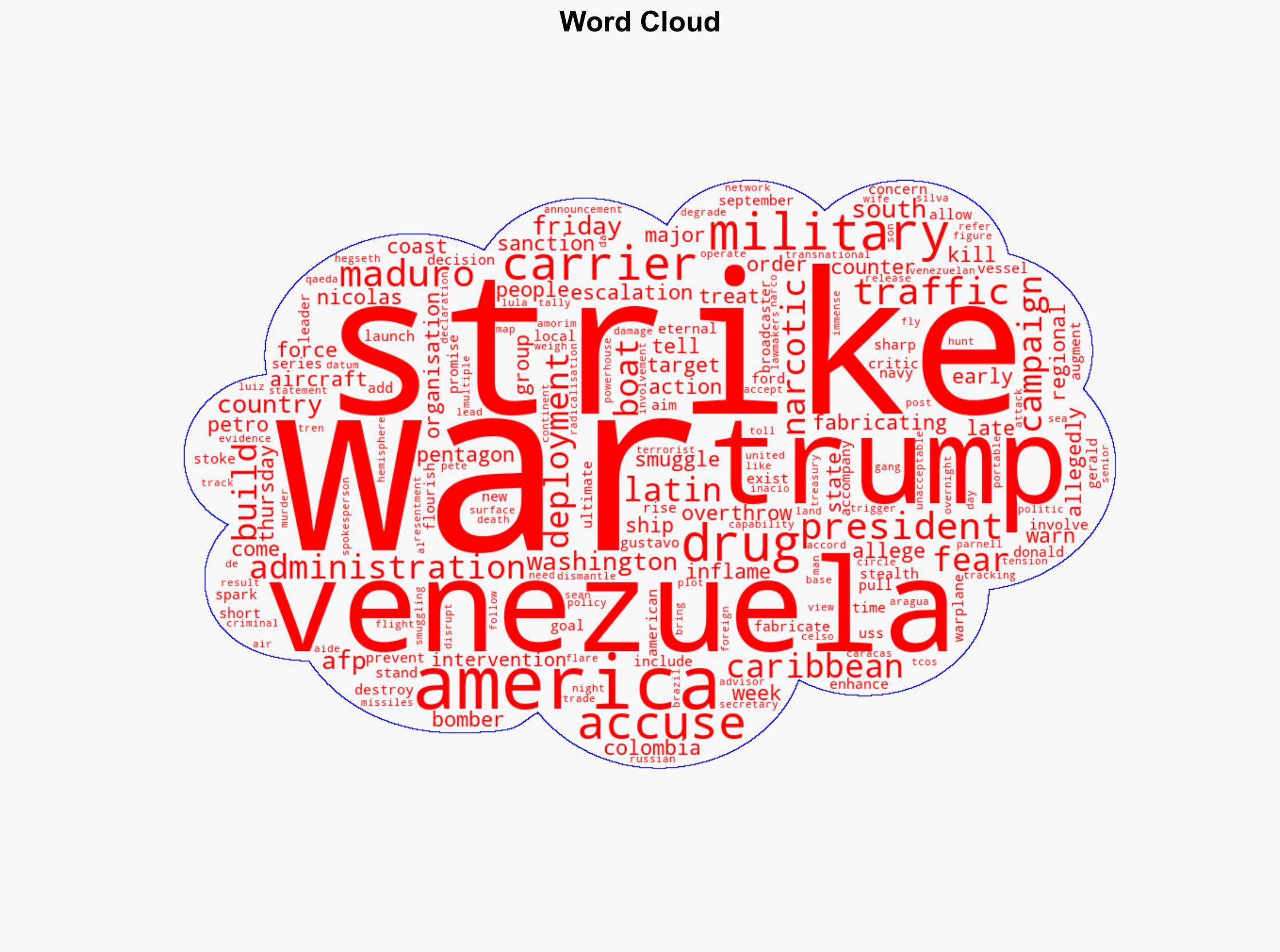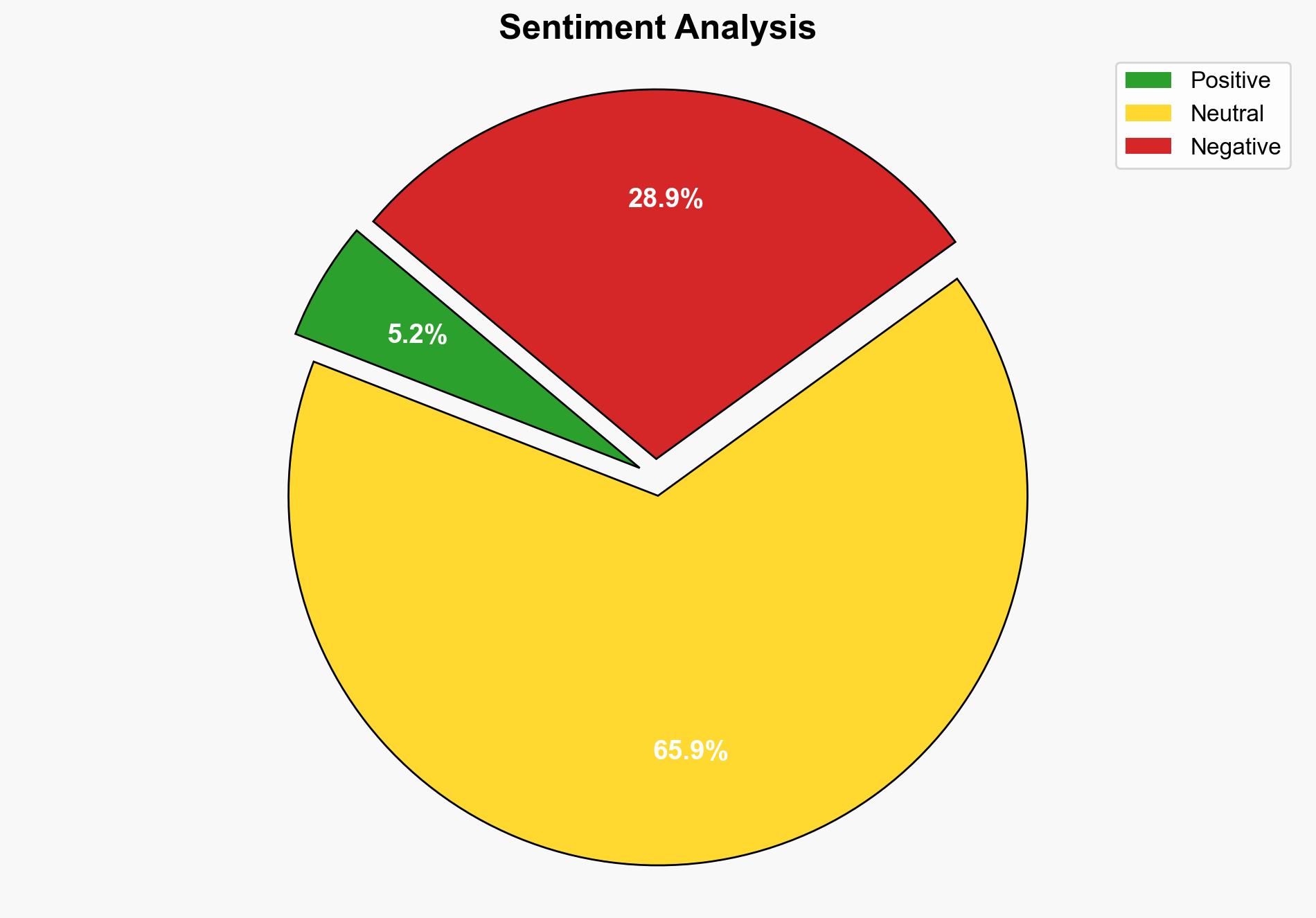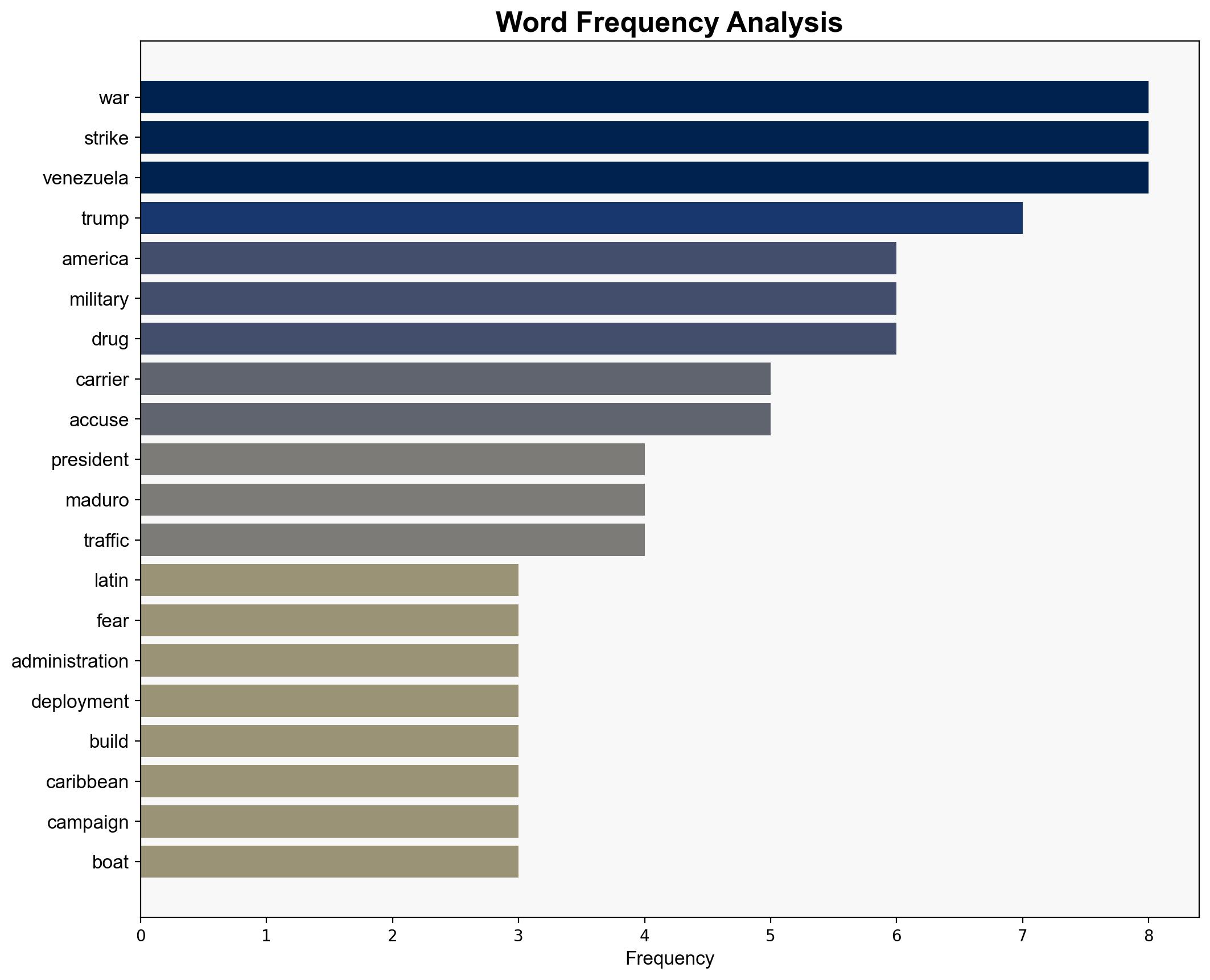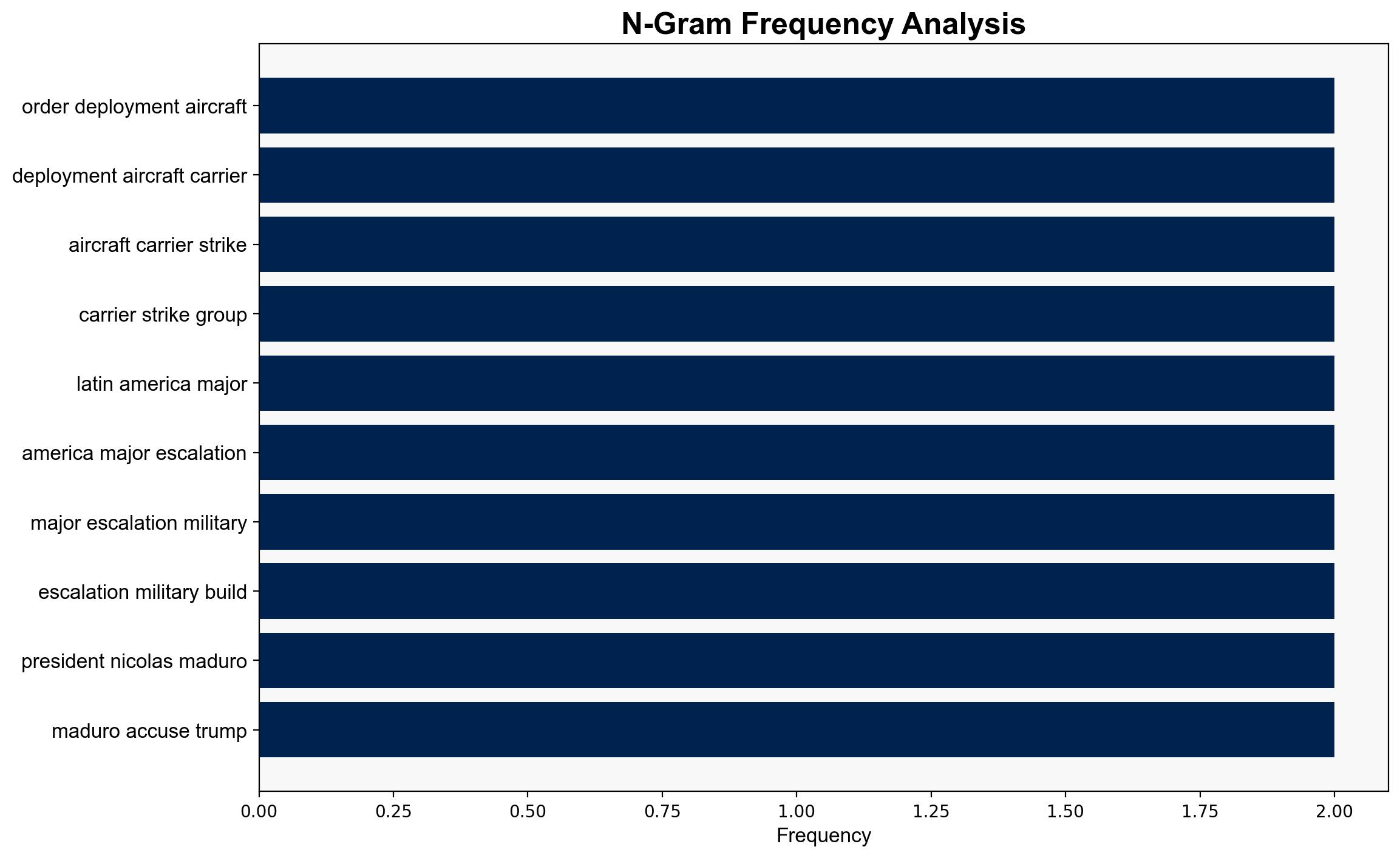Trump sending aircraft carrier to Latin America as war fears escalate – ABC News (AU)
Published on: 2025-10-25
Intelligence Report: Trump sending aircraft carrier to Latin America as war fears escalate – ABC News (AU)
1. BLUF (Bottom Line Up Front)
The deployment of a U.S. aircraft carrier to Latin America is a strategic maneuver with dual potential objectives: countering drug trafficking and exerting pressure on Venezuela’s government. The most supported hypothesis suggests a primary focus on drug interdiction, with a secondary aim of destabilizing Nicolás Maduro’s regime. Confidence Level: Moderate. Recommended action includes diplomatic engagement with regional allies to mitigate tensions and clarify U.S. intentions.
2. Competing Hypotheses
1. **Hypothesis A**: The deployment is primarily aimed at countering drug trafficking operations in the Caribbean and Latin America. This aligns with the Pentagon’s stated objective to disrupt transnational criminal organizations (TCOs) and is supported by the involvement of the USS Gerald Ford and its capabilities.
2. **Hypothesis B**: The deployment is a strategic move to escalate pressure on Venezuela’s government, potentially as a precursor to regime change. This is supported by the timing of the deployment and recent U.S. military actions targeting alleged Venezuelan drug operations, which could be perceived as a pretext for broader military intervention.
Using ACH 2.0, Hypothesis A is better supported due to explicit statements from the Pentagon and the focus on drug trafficking. However, Hypothesis B cannot be dismissed given the geopolitical context and historical U.S. actions in the region.
3. Key Assumptions and Red Flags
– **Assumptions**: Hypothesis A assumes that the primary U.S. objective is drug interdiction, not regime change. Hypothesis B assumes the U.S. is using drug trafficking as a pretext for military intervention.
– **Red Flags**: The lack of clear evidence linking the deployment directly to regime change efforts. Potential cognitive bias includes confirmation bias towards interpreting military actions as aggressive posturing.
– **Inconsistent Data**: Contradictory statements from U.S. officials and regional leaders regarding the true intent of the deployment.
4. Implications and Strategic Risks
– **Geopolitical**: Increased U.S. military presence may heighten tensions with Venezuela and its allies, potentially drawing in external actors like Russia.
– **Economic**: Regional instability could disrupt trade and investment, particularly in energy sectors.
– **Psychological**: Heightened fear of conflict may lead to increased anti-U.S. sentiment in Latin America, complicating diplomatic relations.
– **Escalation Scenarios**: Misinterpretation of U.S. actions could lead to military confrontations, particularly if Venezuela perceives an imminent threat.
5. Recommendations and Outlook
- Engage in diplomatic outreach to clarify U.S. intentions and reassure regional allies.
- Monitor Venezuelan military movements and communications for signs of escalation.
- Scenario Projections:
- Best Case: Successful drug interdiction operations with minimal regional backlash.
- Worst Case: Military confrontation with Venezuela, leading to broader regional conflict.
- Most Likely: Continued tension with sporadic diplomatic efforts to de-escalate.
6. Key Individuals and Entities
– Nicolás Maduro
– Donald Trump
– Gustavo Petro
– Celso Amorim
7. Thematic Tags
national security threats, regional focus, military strategy, geopolitical tension





